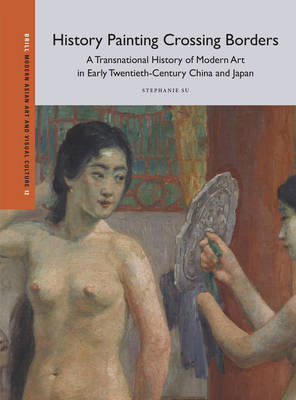
- Afhalen na 1 uur in een winkel met voorraad
- Gratis thuislevering in België vanaf € 30
- Ruim aanbod met 7 miljoen producten
- Afhalen na 1 uur in een winkel met voorraad
- Gratis thuislevering in België vanaf € 30
- Ruim aanbod met 7 miljoen producten
Zoeken
History Painting Crossing Borders, a Transnational History of Modern Art in Early Twentieth-Century China and Japan
Stephanie Su
€ 227,45
+ 454 punten
Omschrijving
If the goal of art history is to elucidate the politics of difference, does it matter when artworks look alike? How do we account for historical connections across regions--in particular, East Asia--if works are viewed from a purely nationalistic perspective? History painting is typically interpreted within nationalist frameworks; History Painting Crossing Borders instead asks a series of provocative questions about the meaning and purpose of art and interpretation. Weaving together a diverse range of materials in Chinese, Japanese, and French, Stephanie Su showcases a transnational history of modern art in East Asia by centering two pioneering artists in Japan and China, Nakamura Fusetsu and Xu Beihong, as key examples of the limits of nationalism and the significance of cross-cultural contexts. The pair's similar training, historical consciousness, and subject matter made their early works resemble one another. Nevertheless, their legacies are in stark contrast: Fusetsu is almost forgotten in Japan, but Xu has been canonized in China. By tracing their careers from East Asia to France and back, this book highlights a previously underexamined moment in global art history and uncovers a crucial relationship between art practice and art historical writing. Bringing together aesthetics, literature, gender studies, and geopolitics, History Painting Crossing Borders charts a new path for thinking about the multilayered and multidirectional histories of modern art in East Asia.
Specificaties
Betrokkenen
- Auteur(s):
- Uitgeverij:
Inhoud
- Aantal bladzijden:
- 228
- Taal:
- Engels
- Reeks:
- Reeksnummer:
- nr. 12
Eigenschappen
- Productcode (EAN):
- 9789004732988
- Verschijningsdatum:
- 27/11/2025
- Uitvoering:
- Hardcover
- Formaat:
- Genaaid
- Afmetingen:
- 193 mm x 260 mm

Alleen bij Standaard Boekhandel
+ 454 punten op je klantenkaart van Standaard Boekhandel
Beoordelingen
We publiceren alleen reviews die voldoen aan de voorwaarden voor reviews. Bekijk onze voorwaarden voor reviews.








